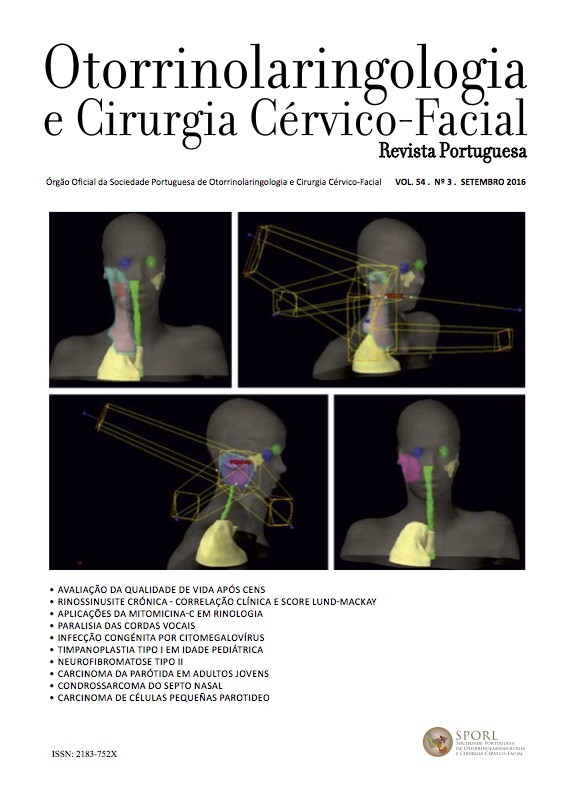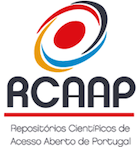Vocal fold parilysis: 8 years' experience in Centro Hospitalar do Porto
DOI:
https://doi.org/10.34631/sporl.363Keywords:
vocal cord paralysis, maximum phonation time, speech therapyAbstract
Introduction: Vocal cord paralysis is associated with significant morbidity because it interferes with breathing, phonation, swallowing and coughing. This study aims to evaluate the functional results of speech therapy in these patients.
Methods: This study included adult patients with vocal cord paralysis submitted to speech therapy as an isolated treatment between June 2006 and June 2014. Demographic data, paralysis etiology, laryngoscopy and maximum phonation time before and after treatment were registered.
Results: The majority of the 70 patients included in this study had a postoperative unilateral vocal cord paralysis. After performing speech therapy there was an increase on average maximum phonation time for all sounds and an approximation of the s/z coefficient to the reference value 1.
Conclusions: The results of this study suggest that speech therapy as an isolated treatment in patients with vocal cord paralysis objectively improves their glottal function.
Downloads
References
Benninger, M S, Gillen, J B and Altaian, J S. Changing etiology of vocal fold immobility. The Laryngoscope, 1998;108: 1346–1350
Dankbaar JW and Pameijer FA. Vocal cord paralysis: anatomy, imaging and pathology. Insights Imaging. 2014:5:743–751
Ahmad S, Muzamil A, Lateef M. A Study of incidence and etiopathology of vocal cord paralysis Indian J Otolaryngol Head Neck Surg. 2002 Oct;54(4):294-6
Al-Khtoum N, Shawakfeh N, Al-Safadi E, Al-Momani O et al. Acquired Unilateral Vocal Fold Paralysis: Retrospective Analysis of a Single Institutional Experience. North American Journal of Medical Sciences. 2013;5(12):699-702
Merati AL, Halum SL, Smith TL. Diagnostic Testing for Vocal Fold Paralysis: Survey of Practice and Evidence-Based Medicine Review. Laryngoscope. 2006: 116(9):1539-52
Christina M P, Daria C M and Brian J P. Unilateral Vocal Cord Paralysis: A Review of CT Findings, Mediastinal Causes, and the Course of the Recurrent Laryngeal Nerves. RadioGraphics 2012 32:3, 721-740
Miller S. Voice therapy for vocal fold paralysis. Otolaryngol Clin North Am. 2004 Feb;37(1):105-19
Orestes MI, Neubauer J, Sofer E, Salinas J, Chhetri DK. Phonatory effects of type I thyroplasty implant shape and depth of medialization in unilateral vocal fold paralysis. Laryngoscope. 2014 Dec;124(12):2791-6
Kent RD, Kent J, Rosenbek J. Maximum performance tests of speech productions. Journal of Speech and Hearing Disorders 1987; 52: 367-87
Steffen L M, Moschetti M B, Steffen N H, Hanayama E M. Paralisia unilateral de prega vocal: associação e correlação entre tempos máximos de fonação, posição e ângulo de afastamento. Revista Brasileira de Otorrinolaringologia. 2004; 70(4), 450-455
Behlau M, Pontes P. Abordagem global na reabilitação vocal. In: Behlau M, Pontes P. Avaliação e tratamento das disfonias. São Paulo: Lovise; 1995. p. 189-262.
Cielo C A, Casarin M T. Sons fricativos surdos. Rev. CEFAC. 2008;10(3): 352-358






